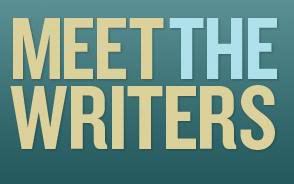Posts Tagged ‘Reconciling Expectations’
Publications: Thing or Behavior?
Posted on: February 8, 2011

Do you see your company's publications as things or behaviors? Your answer can have all sorts of interesting consequences for your customers and your company.
If you started to think about your company’s publications as behaviors instead of things, would such a shift in perspective change the resulting documents? Would your customers respond to your message in a different way?
Consider the publications that you and others in your company create—they probably run the gamut, from sales and marketing literature to online pages to proposals to technical documentation and maybe even to interactive multimedia presentations and video scripts.
Like most writers, you work with others to establish the requirements for each publication and to generate and refine its specifications. You create an outline that captures the topics, features and procedures to be included in each document and organize that content in a way that satisfies the project specifications.
Such an approach is based on seeing the document as a thing. And, while it may be necessary, at least in part, is it sufficient? Does it really satisfy your customers’ needs? Does it let you wring every last drop of value out of what you spend on trying to connect with your customers?
What if you viewed a publication as a set of behaviors, instead of just a thing?
For starters, this might mean that your project requirements stated how your company’s customers would interact with the publication—and any associated product. After all, why do your customers read your stuff? What do they expect to get out of it?
If you thought about customer behaviors—for example, how they use the publication, the ways in which they need to access the document, how they find topics, how they use the information, what other resources they might need, how they might use the document as a focal point for customer-to-customer and customer-to-company interaction—would those considerations change your document specifications? Would the specs begin to reflect a mindset that took user experience into account?
If you viewed each publication as describing, prescribing and integrating a dynamic set of behaviors among your customers, your products and your company, how would that change the types of documents you create?
Would you enhance your publication model to include various scenarios and anticipated interactions that played to customer needs and experiences?
Begin to think about your company’s publications as behaviors instead of things, and I’ll bet your documents become more interactive, more dynamic, more user-friendly and more attuned to your customers.
Now let’s talk: What is your opinion? If you create publications, what is your approach? As a customer, how do you respond to companies’ offline and online publications: What do you like about them? What don’t you like? You can leave your comment at the top of this post. Elizabeth Lexleigh LexPower The Write Ideas
So you’ve decided to work with a ghostwriter. You’re in good company, as ghosting is one of the best-kept secrets in the worlds of business, publishing and technology. Chances are you know someone who has worked with a ghostwriter.
Speeches, books, textbooks, scripts, web content, even social media … you name it, ghostwriters write it. If you could look behind much of what you read, see and hear across all media, you would spy a ghostly presence hovering in the background.
Now that you want your own ghost, what should you look for? What matters most?
Remember that your overarching goal is to find a writer who is a kindred spirit and who can work with you to make your project a roaring success.
Specifically, you want someone who can capture and express your vision and your ideas in your own authentic voice. You want someone who can bring your style and personality to life in the book, or speech, or whatever media your project involves. In all cases, you want the material to read and sound as though you wrote it.
With that in mind, then, here are the top qualifications to look for in your ghostwriter:
- Must be able to write. Ask to see some samples in order to judge for yourself. Does the writing appeal to you? You will have to live with the results, so be sure you like the writer’s style. Some ghostwriters may have one or more clients willing to give references, so inquire whether any are available—but understand that, in most cases, clients do not want anyone to know that their books, speeches and other materials were actually created by a ghostwriter. After all, that’s why they hired one, and they expect their secrets to be kept.
- Must be able to work with you. In general, look for the type of writer who is able to work with CEOs, top executives, business owners, celebrities, and other exceptional people. Once you have several candidates who fulfill this requirement, meet with each of them to see whether the two of you are compatible. Is there a personality fit? Do you like this person? Can you trust this person? As you winnow your prospects, remember my motto: “The project is way too long, and life is way too short, to work with anyone other than someone who is compatible.”
- Must be proficient in the subject matter. While this does not mean the writer must necessarily be an expert, it does mean the writer’s background and other qualifications should be relevant and relatable to your subject area. In addition, since every project presents new material and requires research, look for a ghostwriter who is intellectually curious, and a quick and thorough study.
- Must understand “work for hire.” Experienced ghostwriters should understand this, but do not assume. Since you will of course have a contract, be sure one or more clauses address “work for hire” and exactly what it entails for your project. Note that the best writers will typically have a standard contract ready to discuss with you, and it will include this issue.
- Must work in a businesslike manner. Look for “business competency”: professionalism, integrity, prompt communication, respect, and a customer-centric viewpoint. After all, professional writers earn their living from writing, and expect to work with you just like a business partner.
- Must guarantee excellent work. Look for a ghostwriter who can deliver, on time and on budget. This type of writer will arrive with a game plan, the right questions, and will expect to send you a detailed proposal that outlines the scope of the project, as well as time and cost estimates based on the scope. Pay careful attention to all of this, because the contract you sign will be based on the proposal. Do you like what you see in the proposal?
When all these pieces fit together to your satisfaction, you have probably found the ghostwriter who is well qualified to work with you.
Have you ever worked with a ghostwriter? If so, how did you select that writer? Were you happy with the results? What else would you recommend adding to my list of qualifications?
Are you a ghostwriter? What are your experiences in working with clients?
Please share your thoughts. Elizabeth Lexleigh LexPower The Write Ideas
Are your business proposals missing the mark too often? Have you been told they are “nonresponsive”?
Although you can encounter many pitfalls and hidden traps in responding to an RFP (Request for Proposal), perhaps the most important is this one:
Many companies simply do not meet the requested requirements, as stated in the SOW (Statement of Work).
The SOW describes the product or service a company, government agency or organization wants to buy. It is the key to a successful proposal.
And yet, amazingly, many companies submit proposals that do not adequately respond to the requirements given in the SOW.
Fitting the Pieces Together
To win the business, your company must be able to:
- Meet the requirements set forth in the SOW.
- Write the proposal in such a way that every requirement in the SOW is thoroughly addressed.
Can Your Company Meet the Requirements?
Whether the SOW is general or specific, vague or concrete, long or short, pay attention to every issue and detail it contains.
Before you do any work on the proposal at all, study each section to be sure your company can actually deliver the product or service, or solve the problem. And if so, can you deliver the goods in the manner requested?
If you have any misgivings, contact the company or agency to discuss your questions. You may want to do more research, including on-site, to clarify any doubts or uncertainties about what the project entails.
Additionally, RFPs can contain errors and omissions. If you think you have found any, get in touch with the person in charge of the project to discuss acceptable modifications or work-arounds.
While you are talking with the procurement agent, keep in mind that a tone of voice or a revealing comment on the part of the agent could provide you with insight about the RFP and the project. This information could prove very useful in deciding how to design your proposal – or even whether to submit a proposal.
You may also find it helpful to find out who will be evaluating your proposal. After all, technical experts in a field will have different evaluation standards than accountants or business executives. Knowing who is on the source evaluation board can help ensure that the solution your company proposes will satisfy the requirements of the SOW.
Write to the Requirements of the SOW
As part of your proposal strategy, review the vocabulary and style of the company, government agency or organization for which you are writing the proposal. You must use their terms and jargon. Your language and style must reflect their practice and their context. Know your audience!
The wording in your proposal should reflect the language used in the RFP, especially the language used in the SOW and the evaluation standards. Repeat key words, phrases and sentences, because doing so will help the evaluators recognize that you are responding to the criteria given in the RFP. If you can, write in such a way that they are able to tell which criteria you are responding to, just by reading your words.
Pay close attention to the relative importance assigned to the evaluation criteria. The weighting values of the various categories help determine the scope, level of detail and amount of discussion to give to each issue in the SOW.
For more information on writing proposals, check out Deborah’s Proposal Writing Blog.
You may also want to check out this Boot$trapping Blog page on writing business proposals.
Make It a Winner!
Remember, the SOW is the critical document in the solicitation package. It is a statement of the work your company must perform to deliver a product or service, or solve a problem.
To craft a proposal that stands a good chance of resulting in a contractual relationship, you must address the issues in the SOW in a responsive and relevant manner.
What other advice would you give to readers on how to write a successful proposal? Elizabeth Lexleigh LexPower The Write Ideas




